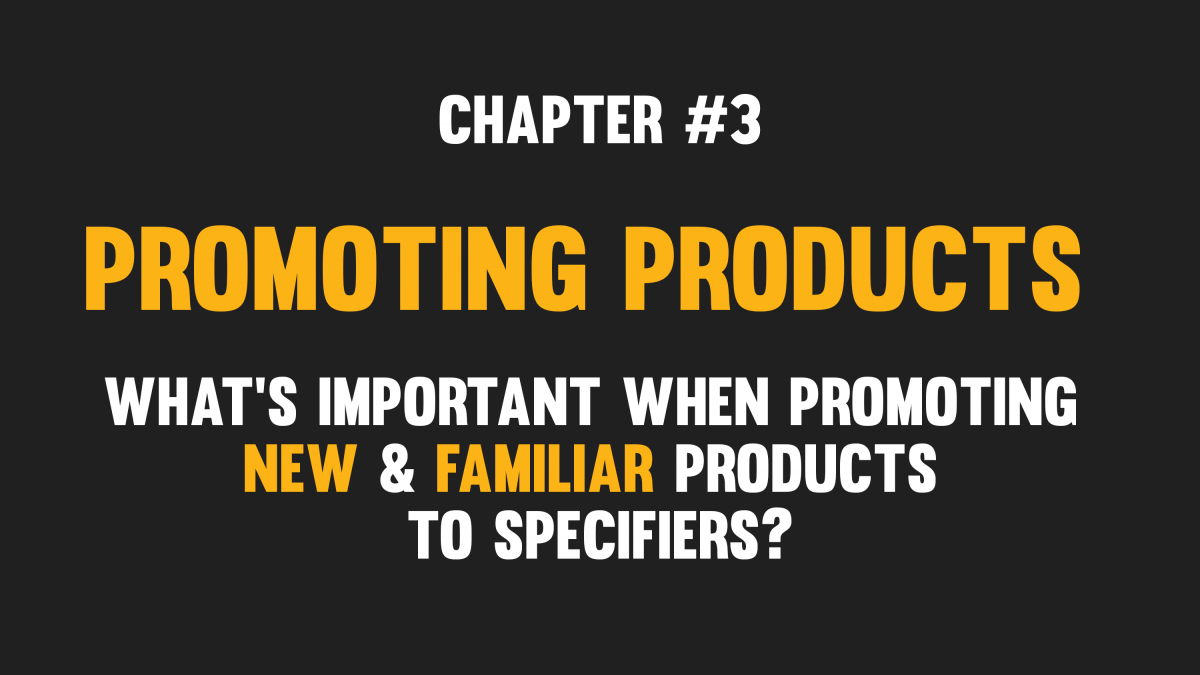What channels do architects and designers refer to when considering products for specification? And what information will give them the confidence to specify your brand new product?
In this third video of the series, Matthew Duder, EBOSS, helps answer these questions with key data from our Specifier Insights 2020 research — a study of the behaviour and preferences of 843 architectural practitioners. This video was originally part of a bonus session of our Specified 2020 annual conference.
Where do architects learn about new products?
When we asked architects which sources of information they use when searching for new products, the top answer was the supplier’s own website.

With 66% saying they mainly use supplier websites for new product information, it’s critical that websites are kept up to date with new product information. Specifier reps are also important in this process with architects relying on reps for news of the latest products.
Of course, not everyone goes straight to the source. Google search is another key tool for architects, so it's important that content on your website is optimised to take advantage of this search traffic.
What about familiar products?
For familiar products, the supplier’s website is even more important. On top of that, architects will be talking to their colleagues about the product to get feedback on their experience.

How can I persuade architects to specify my new product?
When it comes to new products, it’s important to make the research and specification process as simple as possible for specifiers. When asked how a supplier can convince architects to consider a new product, the top 3 answers were:
#1 Comprehensive and easily accessible technical design details
Having accurate and easily accessible technical details simplifies the research phase, so make sure those are simple to find on your website and on EBOSS.
#2 Case studies or history of use
Specifiers want confidence that the product has actually been used successfully; case studies are extremely important for recently launched products. Case studies of New Zealand projects are always preferable, but where this isn’t possible make sure your international case studies relate to NZ performance requirements.
#3 A knowledgeable support team:
With any new product, architects will have a lower level of understanding and a higher risk perception so technical support from the product selection stage right through to design and compliance is really important.
“Proven compliance to ensure council acceptance. Provide good details and ensure any limitations of use are communicated upfront.”
And even before that, any new product that’s launched should offer advantages over what architects currently use in order to gain traction.
“Solve a problem we have with existing products available or demonstrate better quality or value compared to products we select by default.”
Aiming to meet these needs will go a long way towards building trust in the new product and influencing specification.
In our next blog post of the series, we will look at presenting technical information — what influences attendance for supplier presentations and what technical information do architects really want?
Copyright © EBOSS 2020
Request the Specifier Insights 2020 Report
Enter your details to request a hard copy of the full 2020 Specifier Insights Report.
























